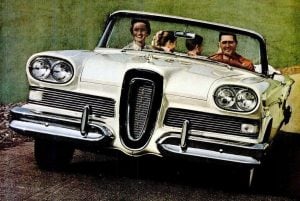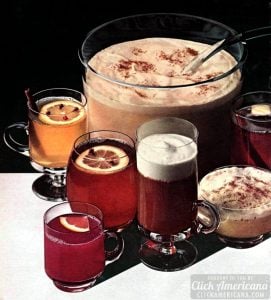Cash registers had already been around for decades, but the mid-20th century models took things up a notch. Companies like National Cash Register (NCR) introduced “change computing” machines that automatically calculated the difference between the total and the amount tendered. Besides being convenient for customers, it also helped store owners cut down on errors and shortages. Grocery chains like Kroger and Kresge praised the technology, boasting that it sped up checkout lines and practically paid for itself by reducing lost cash.

Before these machines, a busy cashier had to keep a lot in their head. Prices were totaled manually, change was counted in a hurry and mistakes happened. By the mid-1950s, automated cash registers reassured customers that every penny was accounted for. Early ads highlighted the paper trail, with printed receipts showing each item, the total cost, any tax and the exact change returned. It was a confidence booster for everyone involved.
These cash registers were also a stepping stone toward the highly automated checkouts we take for granted today. Their whirring gears and levers were mechanical problem-solvers that bridged the gap between the hand-cranked models of the early 1900s and the fully electronic point-of-sale systems that would dominate in the decades ahead.
Here, we’ve collected vintage photos and ads featuring these mid-century cash registers that show just how exciting a machine could be when it promised faster lines, fewer errors and a little extra peace of mind at the checkout counter.
Retro cash registers from the fifties & sixties
National Change Computing Registers return 100% a year on our investment!” – The Kroger Company, Cincinnati, Ohio
“Another service to our customers… National cash registers that figure your change!”
“We have built our business through constant search for ways to give Kroger customers better service. That is why we are now installing National cash registers that figure our customer’s change.

“These registers complete the cycle of protection for both customer and store. They show, at the top of the register and on the receipt, that every step of the sale is handled correctly… price charged for each item, kind of merchandise, total purchased, tax (if any), money or check given checker, and exact change due customers.”
“Change is figured accurately. Cash shortages at the end of the day are reduced to the minimum. Time is saved. Customers are pleased because they are served faster and better.
“To date, we have purchased more than 3,200 of these new registers for our 24 branches and 4 Kroger subsidiaries. We estimate that these registers return us 100% every year on our investment, through savings and other benefits.”
MORE: Ka-ching! Cash register history, plus see 20 antique machines

Grocery store shoppers: Your change automatically figured! (1954)

’50s retro cash register & a little boy in a beanie hat

Kresge’s new supermarket registers figure your change! (1956)
“National change computing registers save their cost every year in our expanding check-out store program.” SS Kresge company, Detroit
To give still better service to our millions of customers throughout the nation, more and more Kresge Stores are being built, especially in new shopping centers. And we have taken two other important steps.
1. We are opening check-out stores where customers take all of their purchases to the checkout stand for totaling and payment in one operation.
2. We are installing Nati9nal ‘change computing’ cash registers which (in addition to showing every step in the transaction) also mechanically, instantly figure out the change due the customer.

MORE: Inside vintage 1950s grocery stores & old-fashioned supermarkets
National Food stores (1957)
“Serving you better… thanks to National Cash Registers that figure your change!”
The National Cash Register Company, Dayton, Ohio (NCR)

Lots of paper grocery store receipts from 1956

Vintage Victor cash register (1966)

MORE: 100 vintage 1960s supermarkets & old-fashioned grocery stores



















One Response
The cash register at my parents’ restaurant didn’t figure change, but doing it yourself wasn’t really that hard. You don’t do it by subtraction, but by addition. Tab is $1.36, customer gives you a $5 bill, you just count up from $1.36. Four cents makes $1.40, then 60 cents more for $2, then three ones to make $5. The register didn’t figure sales tax either, so we had to look that up on a little laminated chart and punch it into the register before getting the total.